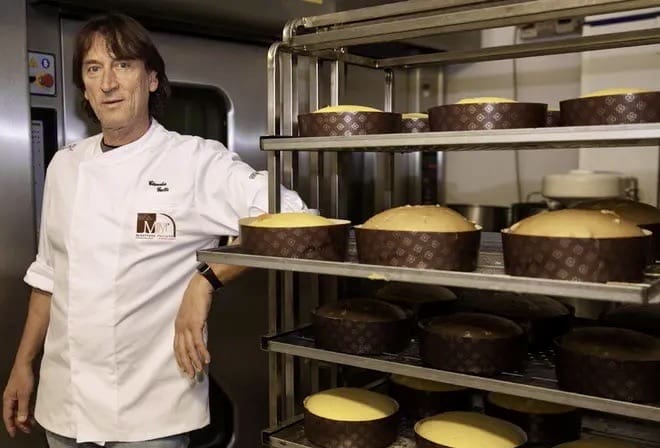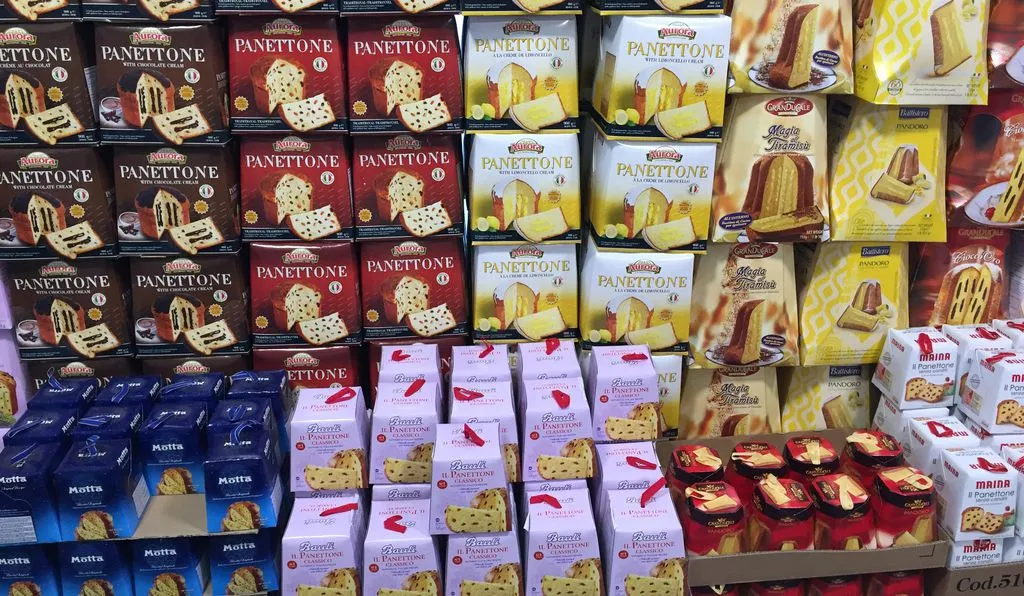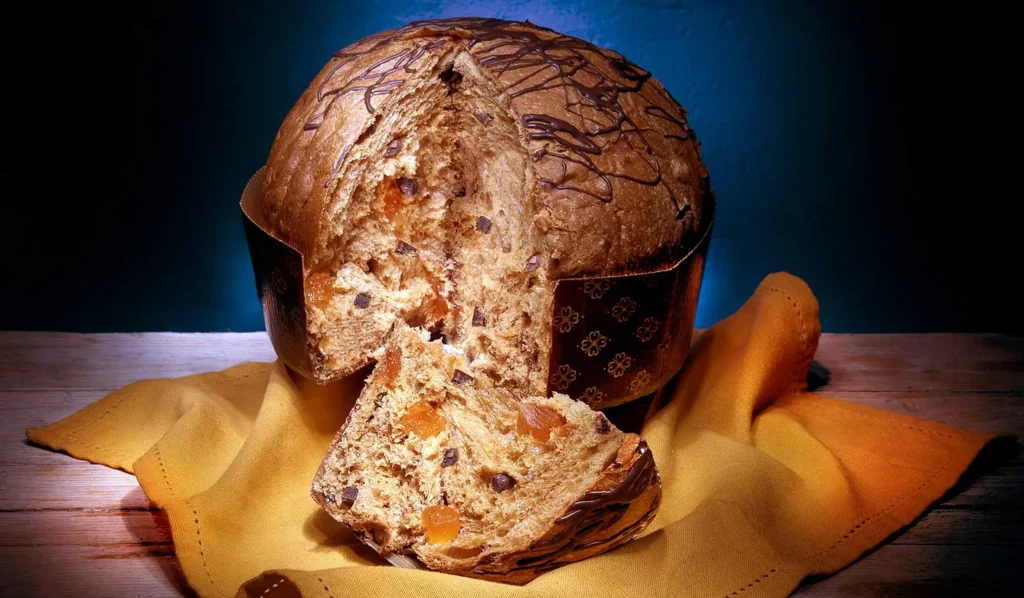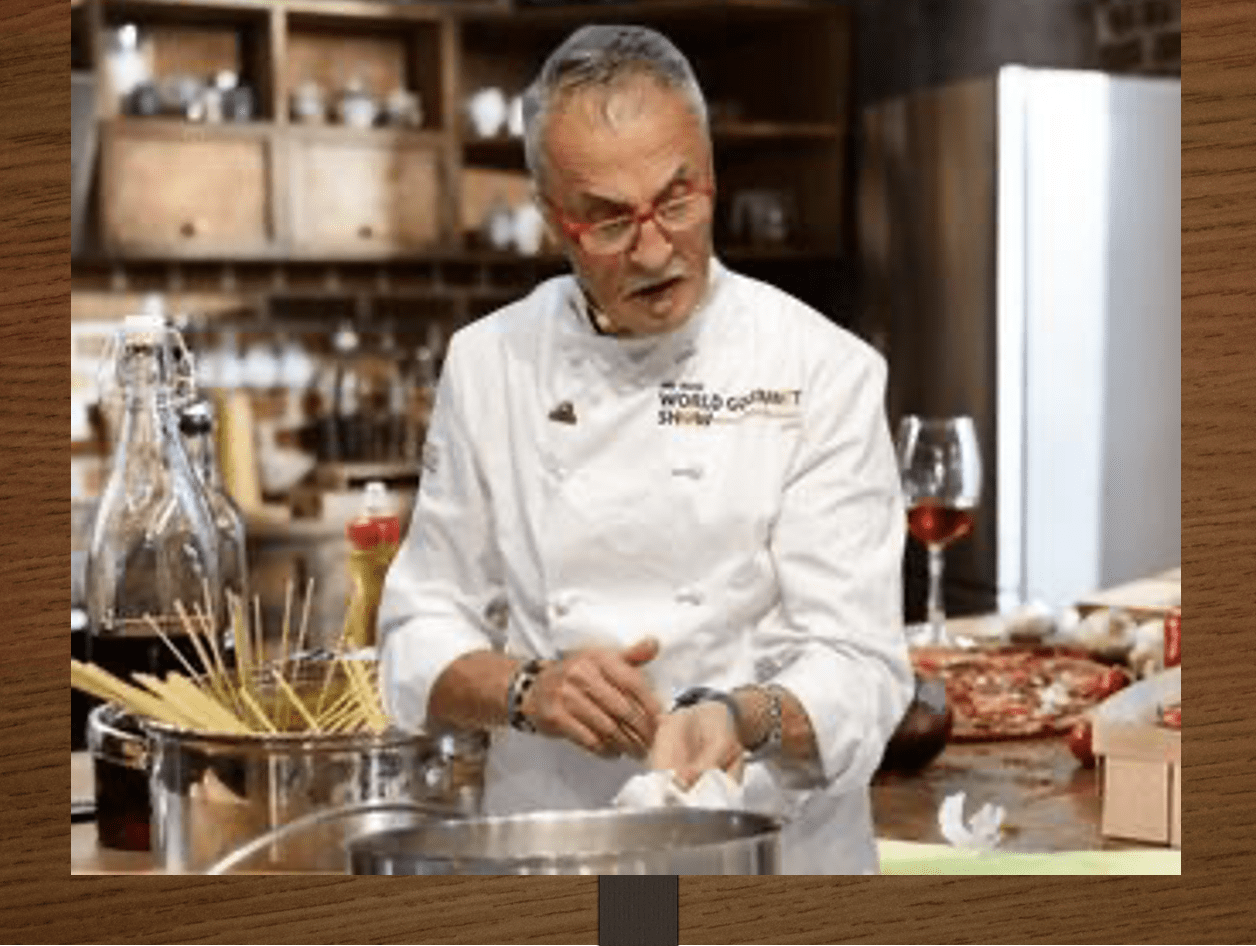Search Posts
Recent Posts
- Out and About in RI: Former Pawtucket Mayor Henry Kinch Tribute in Photos June 24, 2025
- Rhode Island Weather Forecast for January 24, 2025 – Jack Donnelly June 24, 2025
- ART! Mark Freedman, first featured artist of Summer Art Shows at Charlestown Gallery June 24, 2025
- The Bellevue Hotel: Procaccianti Co. New Luxury Boutique Hotel Set for Newport’s Iconic Bellevue Ave June 24, 2025
- Mike Stenhouse, CEO of RI Center for Freedom & Prosperity, named into College Baseball Hall of Fame June 24, 2025
Categories
Subscribe!
Thanks for subscribing! Please check your email for further instructions.

Ask Chef Walter (special): Christmas Panettone. Which to buy? – Chef Walter Potenza
Photo, top: Pastry Chef Claudio Gatti in Italy
CHRISTMAS PANETTONE? WHICH TO BUY?
Panettone is one of the most famous Italian desserts in the world. Popular during the Christmas holidays and consumed between December 8th and January 6th, the Epiphany date.
Friends:
Many of you are familiar with the panettone, but often you ask yourself which to buy for the money and the quality. In this column, I hope to help to make the decision. As my heading image, I chose Claudio Gatti, a talented colleague, and my estimation of Italy’s TOP 3. I will write a column on Claudio in a future segment.
Origins of the panettone
The origins of panettone blend with Milan’s history, where various stories about its origin were born. No single official version agrees on who invented this dessert and under what circumstances.
Many legends circulating have Toni as the protagonist, a baker, cook, or only a young apprentice. However, it seems that Toni first would have kneaded the bread with butter and sugar, creating this “special bread,” Toni’s bread, from which would derive the name panettone. Supposedly the new concoction increased the business in competition from the baker next door in an area near today’s Milan Central train station.
Other legends traced the origins of panettone back to a convent nun. She produced this cake with the few ingredients in the pantry and decorated it by carving a cross on the dough to make the Christmas Holiday more cheerful for the convent. But the most accredited folk tale about the birth of panettone dates back to a tradition of the fifteenth century when the Milanese families celebrated the “ceremony of the yule log,” during which the family gathered during the vigil of December 24. The head of the family supervised the preparation of a large bread, seemingly a panettone. He lit a fire with an oak log during the ceremony, made the cross’s sign, and then with a knife, he also made it over the great bread as a sign of blessing for all family members.
First question: artisanal or industrial?
Undoubtedly a flagship product of Italian pastry, panettone is a product envied all over the world. It is the sweet bread that our French cousins love the most, and they begin the purchase and consumption at the end of August. The composition of ingredients is straightforward. All you need is 00 Italian flour, eggs, unsalted butter, the mother yeast, sugar, candied fruit, and raisins. The preparation is very high on the difficulty scale, which is why many buy it and refrain from the frustrating attempt to make them at home. Also, one of the most caloric-leavened desserts on the market. Its consumption limited to a given period of the year protects us from health problems (overweight first and foremost). However, unfortunately, there is a tendency to exceed consumption in this short period (if the same consumption were “spread” throughout the year, it would be much better).
The marketplace offers several types, listed and selected concerning the quality and price criteria, available in three varieties: industrial, artisan, and pastry panettone. These products have similar ingredients, so it is an exciting challenge because it is played almost equally: both the local pastry chef and the extensive industry must comply with strict discipline, but the chefs enjoy the liberty of creativity as far as size and fragrance.
Industrial panettone

It is the panettone that we find in the supermarket: it is produced in millions of units by large industries (Motta, Bauli, Melegatti, Balocco, Maina, etc.), starting from the end of August. It is mass-produced in a mile-long assembly line, following all applied regulations. The latest numbers show an immense production of 75 million panettones per year, with 70% produced around the province of Verona in the Veneto region.
Large retailers offer aggressive price points during the holidays, competing with other International brands of lower quality and government guidelines. The average cost for a 2-pound of sweet bread is about 10 dollars, certainly an affordable price considering the overall quality. The industrial panettone leads to consumption globally because of cost and cultural knowledge. If you are new to this Italian tradition, the mass-marketed type is advisable to taste before you upgrade.
Artisan panettone

It is produced by small companies, which have a smaller quantity than the large industry, but still in considerable numbers: from a few hundred thousand to a million. However, these are significant numbers because we are talking about several panettones daily, ranging from 1000 to 5000, which require industrial-type tools and processes. Loison, Filippi, Fiasconaro, Pepe, Cova, and Scarpato are some companies scattered throughout the national territory. These products differ mainly in the quality of raw materials and more accurate processing.
1) Brewer’s yeast is not generally used, but regulations and used by large industries to speed up the process.
2) Preservatives are not used either (which are not present in many industrial products). The qualitative difference with the industrial process is significant and the considerably higher price fully justified. Prices vary from 15 to 25 euros, about $ 40.00 per two pounds, depending on the manufacturer. Artisanal panettone is available online, wine shops, delicatessens, and shops specializing in quality food.
Pastry panettone
It is produced in pastry workshops in a few hundred pieces (up to a few thousand) a year. Of course, all the most excellent Italian pastry chefs offer it: Iginio Massari (who also sells it online), Gino Fabbri, Salvatore De Riso, and Claudio Gatti, to name a few, but there are thousands of pastry chefs who try their hand at the production of panettone, in Italy.
The pastry panettone’s real advantage is its freshness: the industrial and artisanal panettone must have a “shelf life,” i.e., a duration of at least 4-6 months produced, shipped to retailers, and then sold. Panettone that goes to the US by ship must be made and sent by September and be available for October. Exported types include mono and diglycerides of fatty acids, a harmless additive that maintains the product’s softness even after months. You can often buy them after the holidays at a reduced cost and still flavorful and rich. However, famous pastry chefs immediately produce and sell the pastry panettone, and most people order them in advance with specific fillings and designs. Customizing your panettone can become a fantastic trend for the family’s holiday.
Therefore it is always a fresher product, sold within one or two weeks, which makes the difference. It does not require mono and diglycerides not found in the industrial and artisan types of panettone. Not all pastry panettone is exceptional, and mediocre products are not worthy of the asking price tag. In short, a good artisan panettone is better than a mediocre pastry panettone. In conclusion, I would suggest spending about $40.00 on a satisfying product, preferably without creamy fillings, such as chocolate or limoncello. Those creams aren’t made from scratch and include various chemicals and stabilizers.
After all, Christmas appears once a year. Buy the best you can afford; your palate deserves it. Buon Natale!
___
Chef Walter will be here on Sunday with his regular Ask Chef Walter columnn!

Meet Chef Walter!
There is a constant, recognizable thread in the career of Walter Potenza to elevate the level of Italian culinary culture in the United States. Besides his unquestionable culinary talent and winning business perspective, Chef Walter has been a relentless educator with passion and knowledge who defeats stereotypes. His life, career, and values are a model, an example to follow by any chef of Italian gastronomy working outside Italy.
Chef Walter appears regularly on National and International Networks such as Food Network, ABC, CBS, NBC, RAI, FOX, and Publications such as NY. Times, Washington Post, Wall Street Journal, Food & Wine, Saveur, Gourmet, and several Italian media outlets. And now – RINewsToday!
